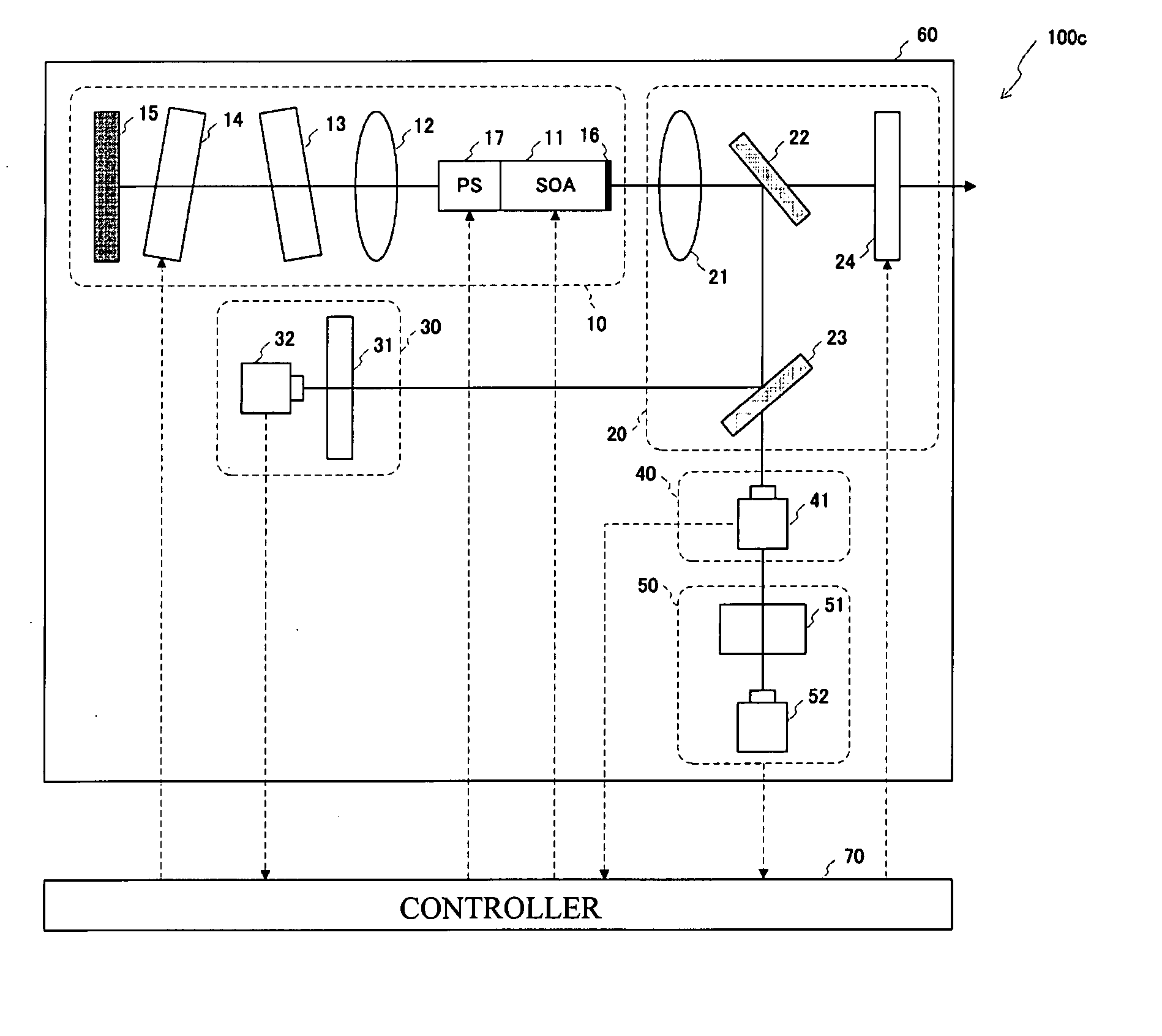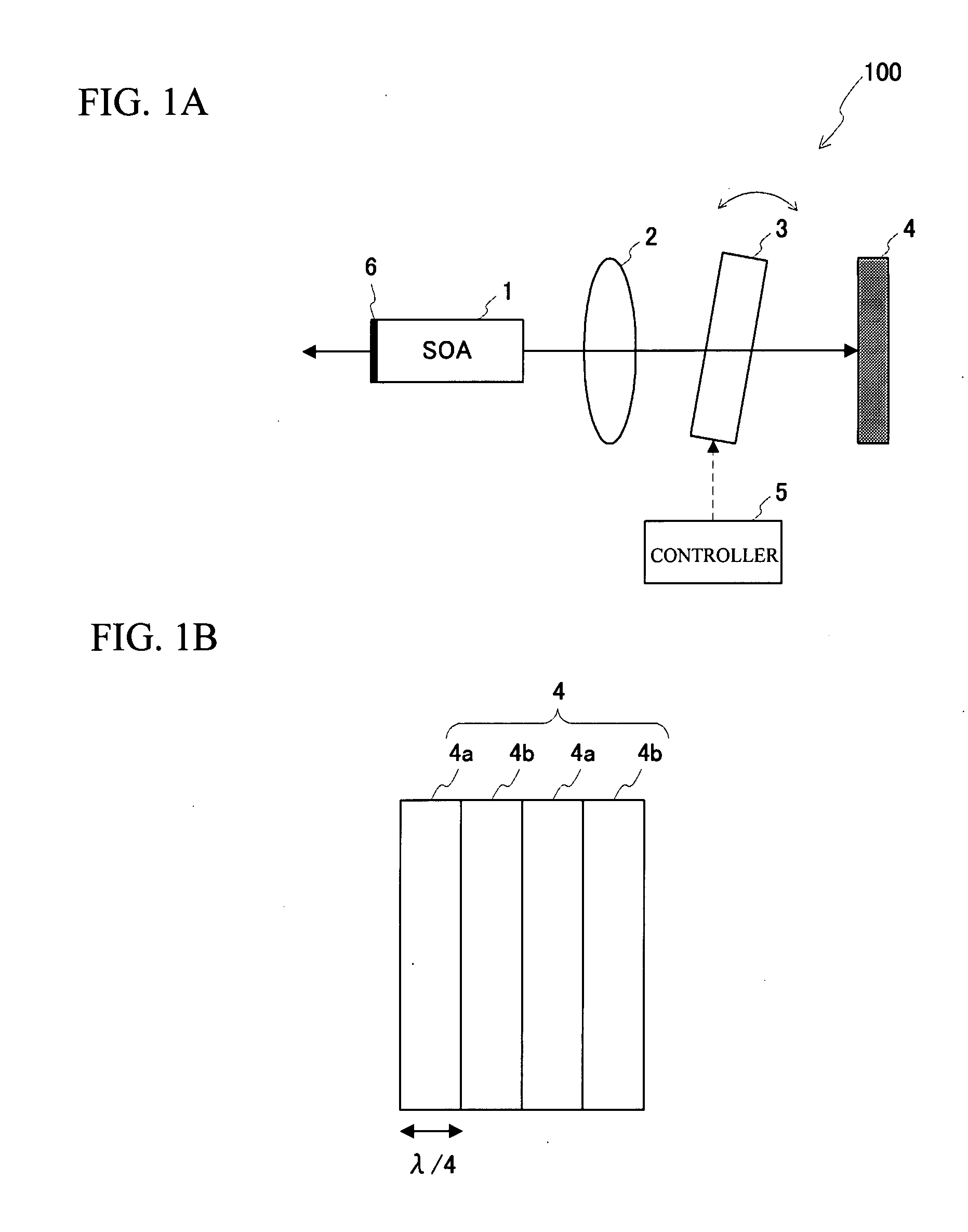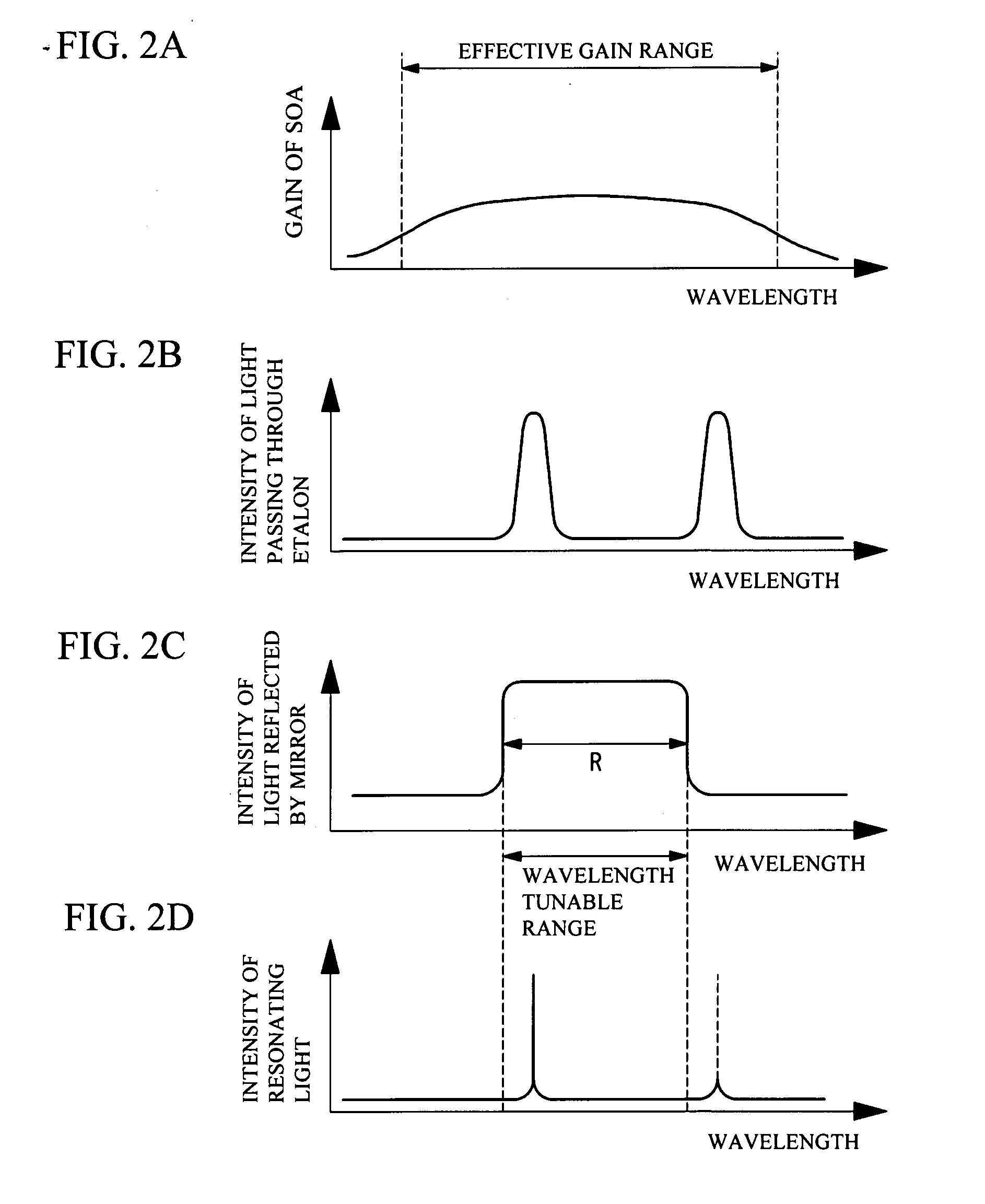Laser module and method of controlling wavelength of external cavity laser
a laser and laser module technology, applied in the direction of laser details, optical resonator shape and construction, semiconductor lasers, etc., to achieve the effect of accurately adjusting the peak wavelength of the outputting light, and improving the wavelength selection accuracy
- Summary
- Abstract
- Description
- Claims
- Application Information
AI Technical Summary
Benefits of technology
Problems solved by technology
Method used
Image
Examples
first embodiment
[0039]FIG. 1A and FIG. 1B illustrate a schematic view of an optical communication device in accordance with a first embodiment. FIG. 1A illustrates an overall view of the optical communication device. FIG. 1B illustrates a cross sectional view of a wavelength selectable mirror 4. As shown in FIG. 1A, a laser module 100 has a semiconductor optical amplifier 1, a lens 2, an etalon 3 and the wavelength selectable mirror 4. The optical communication device in accordance with the embodiment has the laser module 100 and a controller 5 controlling the laser module 100. The lens 2, the etalon 3 and the wavelength selectable mirror 4 are arranged backward of the semiconductor optical amplifier 1 in order.
[0040] The semiconductor optical amplifier 1 amplifies an incident light having a given effective wavelength range, and contributes a laser oscillation. A mirror 6 is arranged in front of the semiconductor optical amplifier 1. The laser light from the semiconductor optical amplifier 1 is re...
second embodiment
[0053]FIG. 3 illustrates a schematic view of a laser module 100a in accordance with a second embodiment. The laser module 100a is different from the laser module 100 in FIG. 1A in a point that a fixed etalon 7 is provided instead of the etalon 3. Here, the fixed etalon is an etalon having a fixed refractive-index. The fixed etalon 7 is fixed in the laser module 10a. A cavity length of the fixed etalon 7 is determined so that the etalon peaks of the fixed etalon 7 are within the reflection bandwidth R of the wavelength selectable mirror 4. The inclination of the fixed etalon 7 is determined so that the reflection bandwidth R of the wavelength selectable mirror 4 has one of the etalon peaks of the fixed etalon 7.
[0054]FIG. 4A thorough FIG. 4D illustrate a laser light resonating in the laser module 100a. FIG. 4A illustrates a wavelength range of a laser light emitted from the semiconductor optical amplifier 1. FIG. 4B illustrates transmission characteristics of the fixed etalon 7. FIG...
third embodiment
[0060]FIG. 5 illustrates a schematic view of an optical communication device in accordance with a third embodiment. A laser module 100b employed for the optical communication device is different from the laser module 100 in FIG. 1 in a point that liquid crystal etalons 8 and 9 are provided instead of the etalon 3. The lens 2, the liquid crystal etalon 8, the liquid crystal etalon 9, and the wavelength selectable mirror 4 are arranged backward of the semiconductor optical amplifier 1 in order, in the laser module 100b.
[0061] The liquid crystal etalons 8 and 9 are composed of a liquid crystal band-pass filter transmitting a light at a given wavelength interval. The refractive-indexes of the liquid crystal etalon 8 and 9 change according to a voltage applied thereto by the controller 5. The etalon peak wavelengths of the liquid crystal etalons 8 and 9 change according to the refractive-index thereof.
[0062]FIG. 6A through FIG. 6F illustrate a laser light resonating in the laser module...
PUM
 Login to View More
Login to View More Abstract
Description
Claims
Application Information
 Login to View More
Login to View More - R&D
- Intellectual Property
- Life Sciences
- Materials
- Tech Scout
- Unparalleled Data Quality
- Higher Quality Content
- 60% Fewer Hallucinations
Browse by: Latest US Patents, China's latest patents, Technical Efficacy Thesaurus, Application Domain, Technology Topic, Popular Technical Reports.
© 2025 PatSnap. All rights reserved.Legal|Privacy policy|Modern Slavery Act Transparency Statement|Sitemap|About US| Contact US: help@patsnap.com



